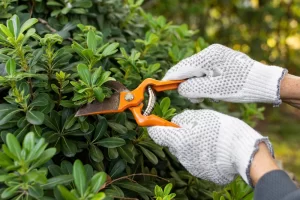 Maintaining a beautiful landscape may increase the overall appeal and value of your property, making it a welcoming retreat for you and your family.
Maintaining a beautiful landscape may increase the overall appeal and value of your property, making it a welcoming retreat for you and your family.
Effective landscape management is the key to a beautiful outside space that you can be proud of, from lush green lawns to colorful flowerbeds.
Today, we’ll look at crucial suggestions and practices for keeping your landscape in top shape and providing a magnificent view all year.
1. Recognize Your Environment
Take some time to observe your terrain before jumping into the upkeep regimen. Identify the various plant species, their irrigation requirements, and growth patterns.
Understanding your landscape’s particular qualities will allow you to create a management plan that is tailored to its specific needs.
Consider your region’s environment and select plants that grow under those conditions, avoiding the need for unnecessary intervention.
2. Routine Watering Schedule
Water is the lifeblood of every garden, and sustaining healthy plants requires a steady watering routine. Determine the best frequency and duration for watering based on the weather and soil type.
Consider purchasing an automated sprinkler system or soaker hoses to ensure even water distribution and to avoid overwatering or underwatering.
3. Trimming and Pruning
Pruning and trimming are necessary actions for maintaining plant health and a well-groomed appearance. Inspect your shrubs, trees, and bushes on a regular basis, removing dead or diseased branches.
Be mindful of each plant’s pruning needs and timing, since incorrect cuts can impair its growth. Pruning at the correct time promotes healthy flowers and fruiting, ensuring that your landscape thrives.
4. Fertilization
Nutrient-rich soil is essential for healthy development and brilliant colors in your landscaping. To avoid chemical imbalances and to ensure a consistent supply of nutrients to the soil, use organic or slow-release fertilizers.
To optimize the advantages and avoid waste, fertilize your plants throughout their active growth phases.
5. Weed Management
Weeds are a constant foe of a well-kept landscape. Inspect your garden on a regular basis and eliminate any unwanted plants as soon as you notice them.
To restrict weed development and conserve soil moisture, use organic weed management methods such as mulching. Avoid the use of harsh chemical herbicides, which can be harmful to the environment and other useful organisms.
6. Lawn Maintenance
A lush green lawn is frequently the focal point of a lovely setting. Mow it at a suitable height for the grass species on a frequent basis to keep it in good condition.
To avoid stress and browning, do not cut more than one-third of the grass blade’s height.
Additionally, aerate the lawn once a year to increase soil drainage and nutrient absorption.
7. Seasonal Cleaning
Your landscaping will require different forms of care as the seasons change. Clear garbage, fallen leaves, and dead plants before each season. Consider planting seasonal flowers and plants to provide color and vibrancy to your landscape all year.
Investing time and effort in landscape upkeep will provide you with an outside retreat that will bring you joy and relaxation. Remember that the art of landscape management is in striking a balance between nature and nurturing, transforming your yard into a stunning work of art.
Picture Credit: Freepik
